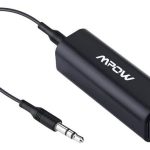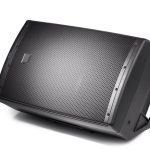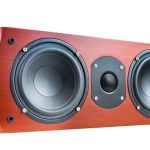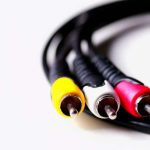Clipping, buzzing, and humming are the most common forms of unwanted noise caused by sound distortion. All of these noises are often related to the amplifier.
If you have experienced any of these noises, you are one among many audio enthusiasts seeking answers to the question:
How can I get rid of clipping, hum, buzz, and hiss from my amp?
We look into these issues in detail and outline possible solutions. Some of the solutions are easy fixes that anyone can do quickly on their own. Other solutions involve mechanical repairs to the amplifier or other components of the audio system, and for these, you might use the assistance of a qualified sound technician. The appropriate solution for your noisy amp problem will depend on the severity of the issue. But there is nothing to worry about as all unwanted noises from an amplifier can be eliminated.
Amplifier Noises: Causes and how to detect and fix them
1. Amplifier clipping
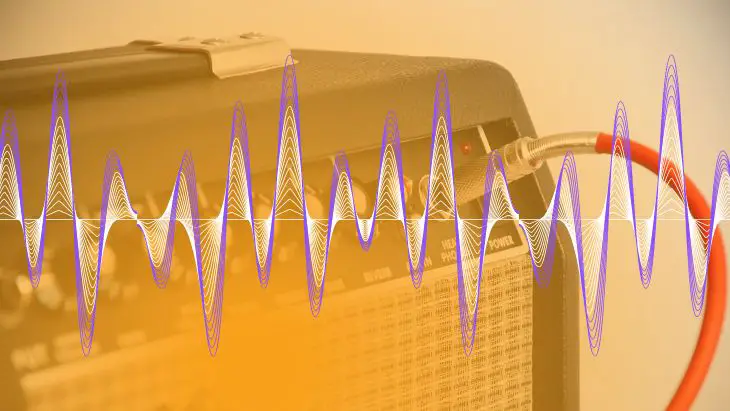
What is amplifier clipping and what causes it?
Clipping is a type of waveform distortion that happens when an amplifier is driven beyond its limits. Forcing the amp to generate more voltage than it can handle results in sound signals reaching the speakers already distorted.
Clipping causes the amplifier to convert the original audio signal into something that does not sound good. Don’t judge the amplifier, though. It tries to amplify the audio signal but it cannot do so without compromising the form of the signal. In other words, the audio signal is still produced but it loses its smooth peaks and troughs (a much-distorted form). Imagine that the highest and lowest points of the sound wave are cut off – that is exactly what clipping does to your sound.
In most cases, poor alignment of the audio system is the major cause of amp clipping. Specifically, a system consisting of high-performance speakers, and an amplifier that is not strong enough for such speakers is a sure bet to amp clipping. These speakers will not be receiving the amount of power they need from the amplifier, and they can be easily damaged in the event of severe clipping.
What does Clipping Sound like?
If you want to be sure that the noise you are hearing is indeed clipping, listen for record mistracking and harshness in the tone of the sound. Amp clipping may also appear as big sound explosions and sudden surges in low-level bass. Evidence of more severe clipping includes a significant increase in brightness, and the music may sound muddy.
Most of the time, clipping is experienced when the volume of the receiver is raised. The audio signal craps out and you no longer have your music. It’s all damaged.
How to Fix Amp Clipping
You have a hunch: get a big, powerful amplifier and all clipping is kept at bay.
Well, this is a good thought and a solution that actually works, except that you might spend too much money on an amp that you don’t need. Before you decide to invest in a new amplifier, here are some options you should consider:
- Proper gain adjustment can eliminate a lot of amp clipping. Check that your amplifier gain is set properly.
- Look for and download the right media players on your computer. Players such as Winamp, iTunes, JetAudio and Windows Media Player have a normalization function that processes your audio files to prevent them from being clipped.
- Use normalization tools such as MP3Gain. It’s a freeware program that helps to normalize audio tracks. Such tools lower clipping sound and also make sure nothing is lost from the original audio.
- The ultimate solution, however, is to make sure that the amp you are using can comfortably drive the speakers in the system. Align your system such that the amp can provide the continuous power needed by the speaker(s) without nearing its RMS power rating.
2. Amplifier Hum, Buzz, and Hiss

A ‘hum noise’ can come in form of a low-frequency, non-irritating drone (approximately 50 to 60Hz). In subtle forms, hum is simply a hiss, and it’s usually something you can live with.
Amplifier buzz sounds like a higher pitched, irritating, raspy, ‘angry insect’ kind of sound (about 100 to 120Hz). This, for sure, you cannot live with if you are keen on enjoying quality audio. Audio hum and buzz can also be seen on a TV or projector screen as diagonal bars run across the screen.
What causes the amplifier to hum and buzz?
Amplifier hum is usually mechanical in nature and internal to the equipment. Buzz typically emanates from speakers, many a time as a result of a ground loop.
A ground loop occurs when there are differences in power supply between audio equipment. In-home stereo, ground loops often occur when the amplifier is plugged into a different electrical outlet than turntables and other sound sources.
Hum from an audio amplifier can also be a result of the amplifier input picking up AC electrical power around the home. It is normal for electrical power lines to radiate some AC. If the audio amplifier is very sensitive, and the wiring feeding the amp is not shielded sufficiently to keep radiated AC out, then amp hum is likely to happen.
However, good and enough shielding on the input wiring may be there, but still, the amp input picks up AC from the surrounding environment. Further investigation should be done to see how well grounded the shield is. Sometimes, the shield may have a bad connection to its ground, and this could be the source of the amplifier humming or buzzing.
Noteworthy, AC pickup does not occur in battery-run installations, such as in your car. There is no AC around (all power is DC running from the battery through the amplifier to the speakers), and so hum in-car audio systems cannot be from AC pickup.
Another cause of amplifier hum is bad amplifier power supply. For amplifiers that have been in use for many years, their filter capacitors can dry out over time so that they no longer work properly. These components are responsible for supplying power to the amplifier, and if they malfunction, amplifier humming and buzzing is inevitable. Having the amplifier checked and repaired by a qualified technician is the best way to solve this issue.
How to Eliminate hum/buzz/hiss from Amplifier
Since there are many potential causes of hum, the first step is to determine the type of hum in your situation.
Experts have broken down hum into two wide categories: 60Hz hum caused by poor shielding, close proximity to magnetic fields, and cable problems; and 120Hz buzz, usually a result of ground loops.
The following tips make for a guide on how to eliminate hum/buzz from your amplifier and the entire audio system:
- Isolate the cause of hum/buzz: In most cases, one component of the system is the cause of the hum/buzz noise. Isolating the culprit is a good first step toward quickly and effectively solving the issue. You can do this by running your amp’s input source select switch through its settings to determine which component is making noise. If you find out that all the components are making noise, that’s an indication that your amp’s power supply is more likely than not to be where the problem lies.
- Check ground connections: Turn off all power to the audio system components. Using a heavy-duty power strip (consider one with a surge protector), connect the amp and other audio sources to the same power outlet. Connect the ground wire of your turntable to the grounding screw at the back of the amp’s case. If you can still detect hum in the system, you are dealing with another source of noise.
- Here’s another suggestion for solving hum/buzz if you suspect a ground loop. Unplug all components and sources from the AC outlet. Then, slowly plug one component at a time into the amp. The offending cable or component will be detectable when you get to connecting that source.
- Keep the amplifier away from cellular and fluorescent devices: Fluorescent/neon lights, dimmer switches and cellular devices can introduce extra noise to an amp when located too close. You can do this simple test – move phone away from the amp, and the amp away from any fluorescent/neon lights and switches. If the noise disappears or lessens, you have identified the culprit.
- Power conditioning: a power conditioner prevents extra noise that could be introduced by dirty power. There are conditioners that include noise filtering technologies to ensure a noise-free power supply no matter where the power source is located.
- Avoid using cheap, defective, or poorly shielded power and amplifier cables.
To a wide extent, undesired amplifier noises are preventable and fixable (when they occur). Matching speakers with an amplifier that can comfortably power them is the first line of defense against clipping. Not just any amp can power your speakers.
To prevent or eliminate hum, hiss, and buzz, check for proper grounding and input wire shielding, and ensure that the amp’s internal power supply is monitored and well maintained. These measures should help you to enjoy undistorted audio from your sound system consistently and for many years.
Michael Evanchuk is a San Francisco-based sound engineer with 20 years’ experience installing, troubleshooting, and repairing commercial, automotive, and household sound equipment. Evanchuk owns an auto stereo center, where he offers highly competitive car audio installation and repair services. He has written dozens of articles on different sound engineering topics, all of which have been published in leading journals, blogs, and websites.


